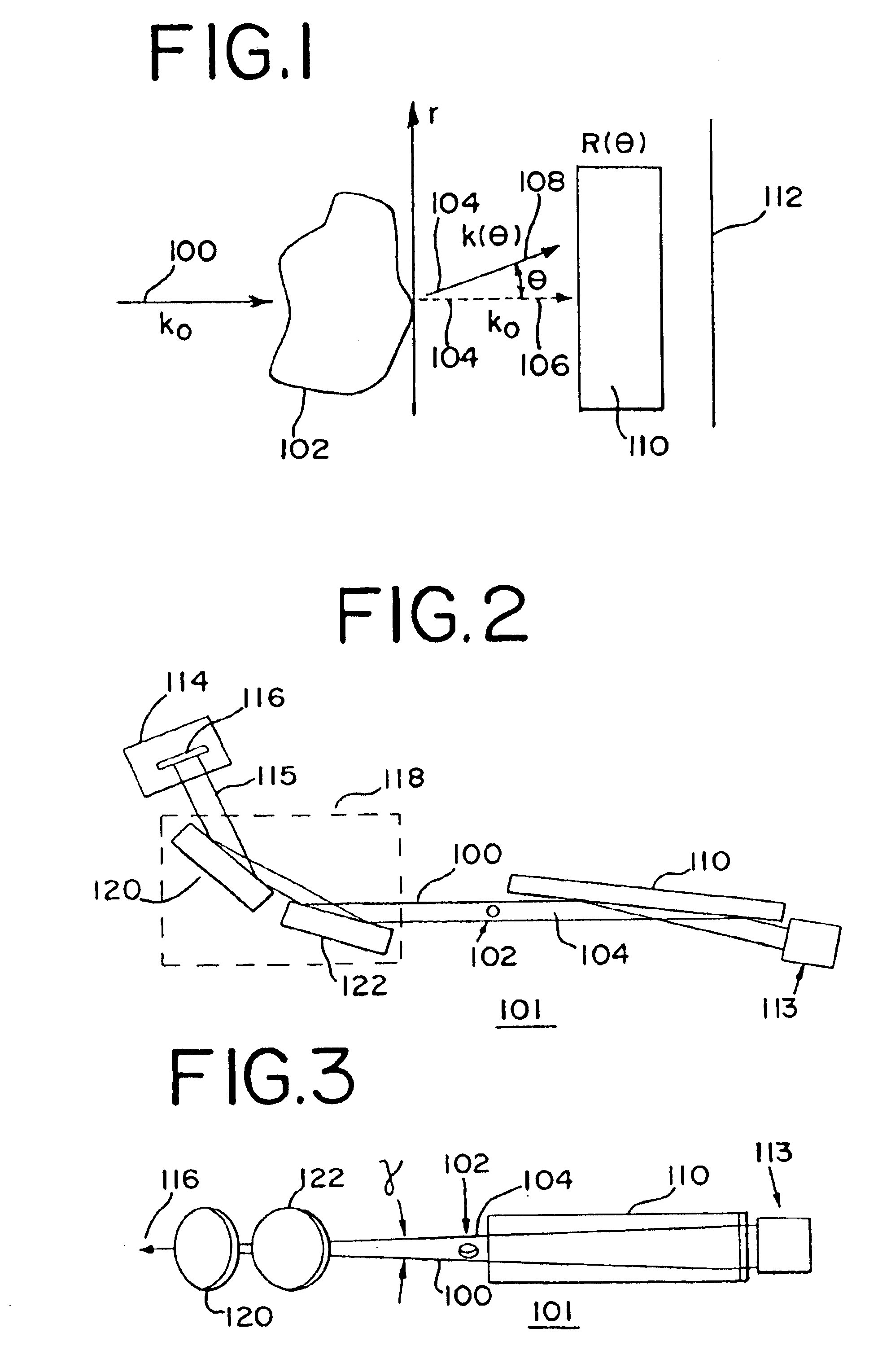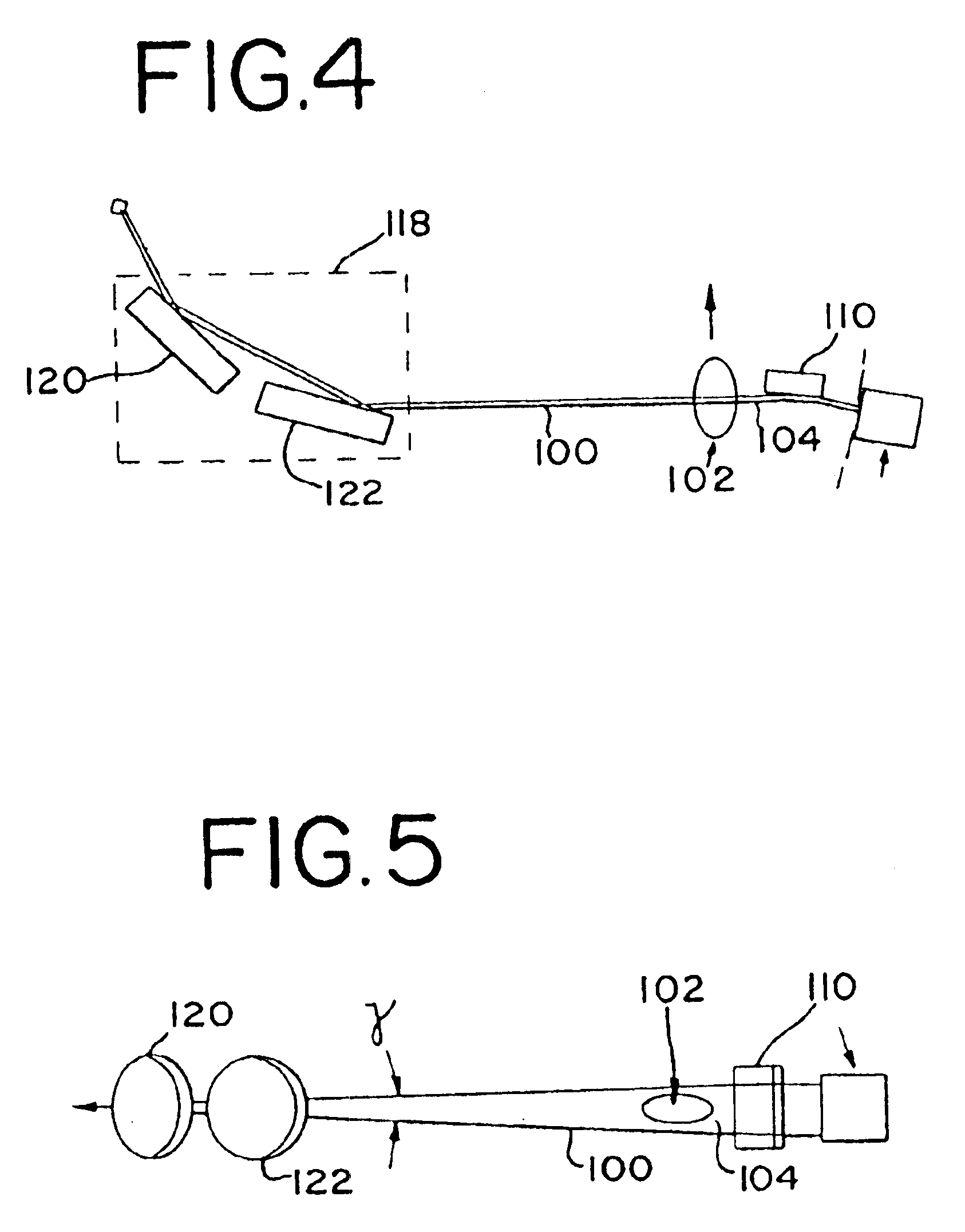Dark-field phase contrast imaging
a contrast imaging and dark field technology, applied in imaging devices, instruments, nuclear engineering, etc., can solve the problems of deteriorating image, inability to use strong x-ray beams for visualization of the inner structure of integrated circuits, and inability to accept the way, so as to reduce the negative influence and reduce the radiation flux
- Summary
- Abstract
- Description
- Claims
- Application Information
AI Technical Summary
Benefits of technology
Problems solved by technology
Method used
Image
Examples
Embodiment Construction
The general principles of x-ray refractive radiography are shown in FIG. 1. In particular, a parallel x-ray beam 100 with a wave vector k0 penetrates the object 102, transparent to x-rays. Because of the refraction of x-rays on the inner structure of the object 102, the output beam 104 is composed of the original wave 106 with the vector k0 and the refracted waves 108 with vectors k(θ) slightly declined from the initial vector k0. An analyzer 110 then differentiates the output waves 104 by their direction θ. Thus, the resultant image registered in the image plane 112 directly behind the analyzer 110 is formed by the intensity variations R(θ) proportional to the angle of refraction θ. Therefore, the resultant intensity distribution in the image plane 112 may be presented in the form of a sum
I(r)=R[θ(r)]+I0 (1)
where I0 is the intensity of the direct beam 106, which may be much greater than the useful term R[θ(r)]. The direct beam 106 carries practically no information about the objec...
PUM
 Login to View More
Login to View More Abstract
Description
Claims
Application Information
 Login to View More
Login to View More - R&D
- Intellectual Property
- Life Sciences
- Materials
- Tech Scout
- Unparalleled Data Quality
- Higher Quality Content
- 60% Fewer Hallucinations
Browse by: Latest US Patents, China's latest patents, Technical Efficacy Thesaurus, Application Domain, Technology Topic, Popular Technical Reports.
© 2025 PatSnap. All rights reserved.Legal|Privacy policy|Modern Slavery Act Transparency Statement|Sitemap|About US| Contact US: help@patsnap.com



